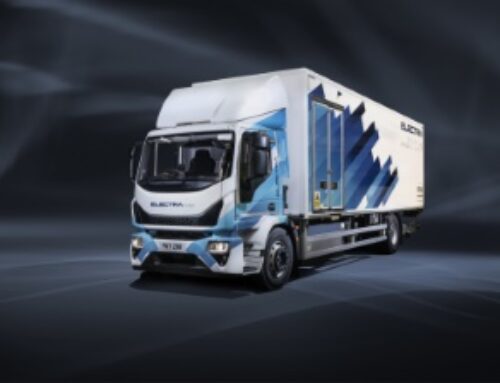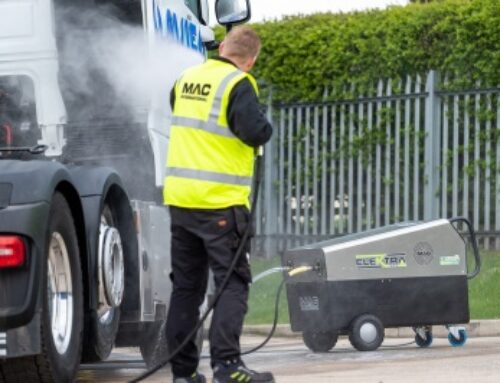Brake monitoring on the move with BPW
 Trailer technology specialist BPW has outlined the workings of its electronic brake performance monitoring (EBPM) system, typically incorporated as standard in its idem telematics package.
Trailer technology specialist BPW has outlined the workings of its electronic brake performance monitoring (EBPM) system, typically incorporated as standard in its idem telematics package.
The system has been designed by BPW engineers in the UK, in collaboration with the BPW Mechatronics Department in Germany and idem, BPW’s multiple award-winning telematics company.
The function audits the brake performance of a trailer and reports it to the operator via idem telematics. All braking events are monitored; however, only those that fit certain criteria, making them suitable for reliable analysis, are used to report on braking performance.
EBPM makes use of data taken from the trailer’s electronic braking system (EBS) during a braking manoeuvre. It combines this with data from the telematics system in order to calculate the change in speed over distance and time and determine a deceleration rate for that manoeuvre.
The data is then transmitted to the idem servers via General Packet Radio Service (GPRS). Once processed, it becomes available to the report writing system.
“Traditionally, trailer brakes are tested annually at the MOT on a roller brake tester,” explained BPW.
“This provides a performance figure for the trailer in a static condition; i.e. the vehicle combination is not moving, so the brakes are operating without modulation from the tractor unit and at a slow speed only simulated by the brake rollers.
“For a tri-axle semi-trailer, there is a testing condition which allows the trailer to be presented for the test in the unladen condition and where wheel locks are relied upon in order to pass the test.
“In recent times, there has been a move towards testing trailer brakes four times a year, one of which must be carried out at MOT time.
“Continuous monitoring of trailer brakes is an alternative. This is a very cost-effective and accurate method for monitoring braking performance. EBPM provides for this, and the vehicle will only require a roller brake test annually at MOT time.”
Because EBPM continually monitors the trailer brakes, BPW adds, there are other advantages. These include the fact that the brake efficiency is calculated each time the brakes are applied, and therefore, the trailer is tested with varying load conditions. The trailer brake performance is also given at normal highway speeds, and not just at slow speeds on the brake roller tester.
With EBPM, the foundation braking system is also being tested whilst running at its correct working temperature, the company points out; and any faults that affect the performance of the brakes will become evident before the next scheduled brake roller test.
“Reports can be generated for the user at various intervals to satisfy either the statutory requirements or those demanded by the business for planning service intervals or service operations,” said BPW.
“When EBPM gathers the brake efficiency data, it does so for the entire combination, i.e., the tractor and the trailer together as a single unit. This means that the figures are not directly compatible with those from a brake roller tester.
 “The system’s software allows for this, as well as the impacts of external variables, in order to create data for the customer that is comparable to data from the brake roller tester. In order for this system to work correctly, it is essential that the trailer brake calculations are accurate
“The system’s software allows for this, as well as the impacts of external variables, in order to create data for the customer that is comparable to data from the brake roller tester. In order for this system to work correctly, it is essential that the trailer brake calculations are accurate
“An important part of the installation of EBPM is to ensure that the brake calculations are checked and that changes are made where necessary. It is also important that the braking compatibility between the tractor and the trailer is accurately set; otherwise, the quoted braking efficiency may not be correctly stated for the trailer when compared to the figures gained from a roller brake test.”
It is crucial to understand that the results of an unladen brake roller test for a trailer cannot be compared to the results for braking efficiency given by EBPM, says BPW.
“This is because the figures from an unladen test will only record the retardation indicated at the point of wheel locking, whereas under normal loading conditions at highway speeds the performance may be higher,” the company continued.
“Trailers loaded to at least 60 per cent of the maximum bogie load will yield more accurate results. However, allowances will need to be made for testing with cold brakes at low roller speeds.
“It is natural to assume that in cases of reported poor brake performance, the trailer is in need of attention, but the problem could equally be an issue with the tractor braking system. It must be remembered that the figures sensed by EBPM are for the combination. The first step when investigating poor (or excessive) braking performance is to carry out a laden graduated brake roller test.
“The reports that are generated by the system can be for various periods. However, 90 days will give a very good overall picture of how the brakes are performing, and a weekly view will give an early warning of any problems.”
Alongside the EBPM function offered by idem, there is also the option to add tyre pressure monitoring (TPM), temperature control monitoring (TCM), and door sensing.










